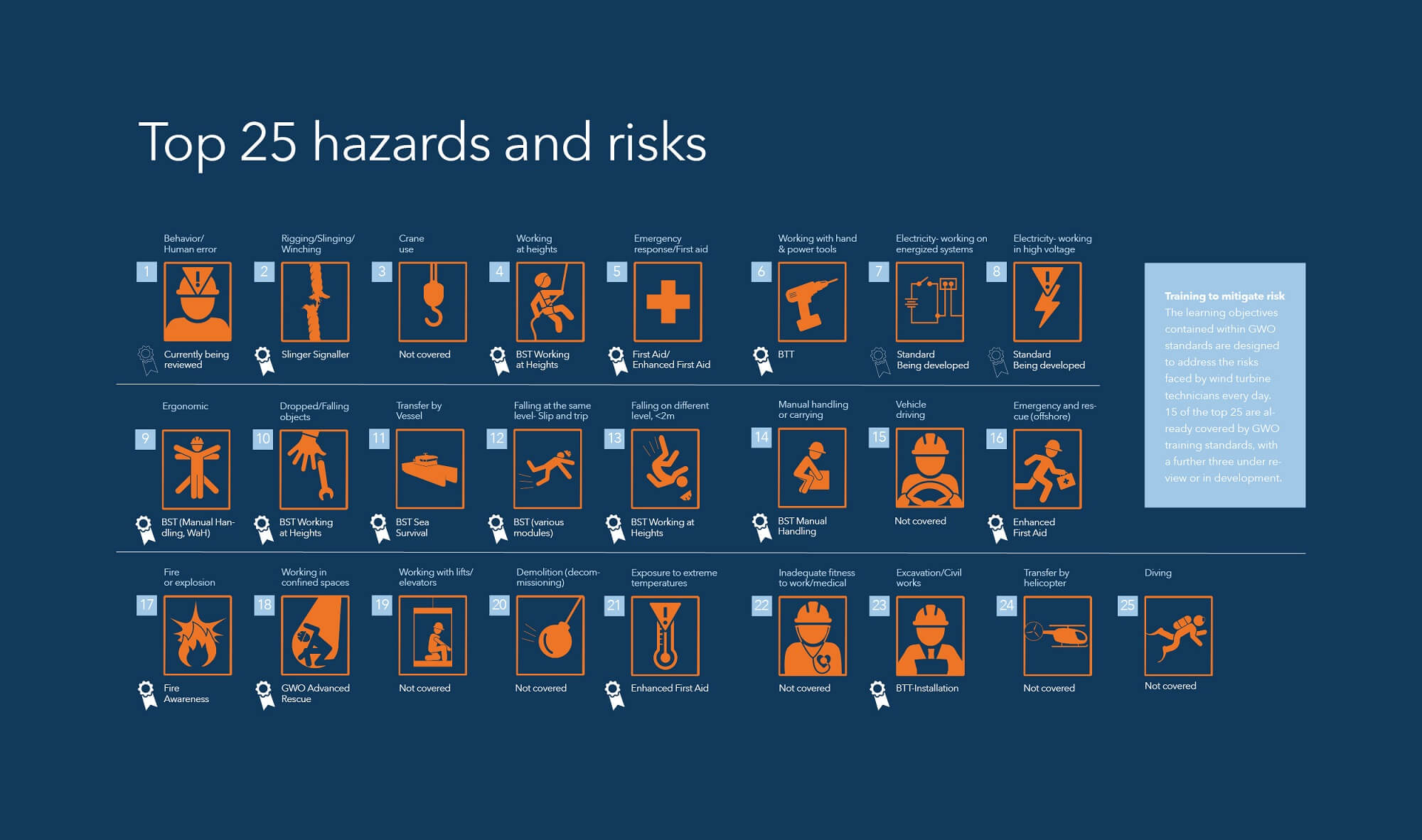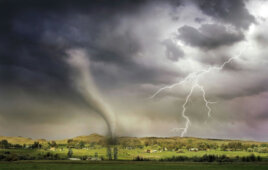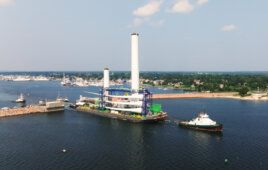By Wesley Witt, chair, and Kristy Abel, vice chair, GWO North America Committee
The amount of standardized safety training continues to increase year-over-year across North America in the wind industry because companies gain productivity and a more flexible workforce, while workers are more easily hired and valuable to their employers.
In 2020, the number of Global Wind Organisation (GWO) training modules completed grew by 30% compared to the previous year and exceeded 10,000 courses in North America. More and more technicians are trained in basic safety training (BST) that includes first aid, manual handling, fire awareness and working at heights.
Additionally, growth is seen in basic technical training (BTT) and advanced rescue training (ART). BTT covers safe working activities in relation to the mechanical, electrical and hydraulic components of a wind turbine, while ART enables technicians to perform up-tower rescue in the nacelle, tower, hub, spinner and inside the blade using industry-standard rescue equipment.
Comparing 2019 to 2020, completed BTT courses grew by 24% across North America, while the number of ART courses completed rose by an amazing 600% — illustrating how the standard created by GWO members met an industry need for up-tower rescue.
Technicians with certifications in all three GWO standards (BST, BTT and ART) can save employers approximately three weeks of entry level training, allowing them to perform safely and effectively on wind turbines.
An additional benefit of GWO standard training for employers is that certificates for completed courses are uploaded to WINDA, the global wind industry training records database. Employers can use the database to verify certifications of employees and contractors who have finished GWO-certified training courses, essentially making the hiring and onboarding more efficient and effective.
An inside look at development of training standards
GWO standards are created by the industry, for the industry. The membership of globally leading OEMs and owner-operators use a dynamic list of known risks and hazards faced by wind turbine technicians to inform their development of training standards.
As the graphics in this illustration show, there are currently 25 top hazards and risks grouped into GWO’s current list. A white rosette on the illustration indicates that a training standard has been created to mitigate that risk, while a transparent rosette indicates that a training standard is in development. For other risks on the list — like items 24 and 25, diving and helicopter transfer, for example — GWO members know there is already an established training standard available and there is no need to re-invent the wheel. Since this list was last published, item 19 (working with lifts/elevators) has also been developed into a new GWO training standard — the GWO Basic Lift User course.
Using this top-level matrix as a guide, the beginning for development of a standard is analysis of data, including injury records, risk statistics and existing training programs already in use by wind turbine manufacturers and owner-operators, which are the GWO membership.
Specifically underway now is a standard for control of hazardous energy (COHE) for release in October 2021.
The COHE standard addresses several challenges for employers and is illustrated by risks 7 and 8 on the top 25 risks and hazards list (7: electricity – working on energized systems; and 8: electricity – working in high voltage).
The team developing the COHE standard begin with a problem-solving statement that specifies the training standard is intended to mitigate safety risks of hazardous energies for technicians in the wind industry and reduce the need for company-specific COHE trainings while ensuring efficient resource allocation and stakeholder collaboration.
We have observed that the GWO current training standards aren’t fully reflecting the risk environment faced by technicians in the wind industry in terms of hazardous energies, which is a central part of the value proposition for GWO, i.e., creating risk-based training that reflects the risk environment in the wind industry.
The process for development of the COHE training standard includes three areas of focus:
- Analysis of members’ needs and requirements to create the COHE standard.
- Design of a minimum viable product standard based on identified needs.
- Develop and test of the training standard to increase technicians’ knowledge of hazardous energies, their characteristics and how to recognize them.
This training will increase technicians’ skills to measure for the presence of hazardous energy and to isolate the sources of hazardous energy.
This is a complex area, governed by a wide range of regulatory systems depending on where you are based. For example, working with electricity in Europe is a protected profession requiring several years in education after high school. In other countries, simply calling oneself and electrician can be enough to qualify.
Nevertheless, the COHE standard will do what GWO training standards always do — look at the risks and hazards specific to a wind turbine environment and provide training that helps workers avoid injury in that place of work.
The standard will be built on a foundation of learning objectives that the GWO instructors must achieve with their students in the specified time. Each learning objective incorporates lesson elements where instructors teach students using a taxonomy guide supporting learning in three domains: knowledge, skills and ability. Within those three domains, the lessons will either be at the basic level, intermediate or advanced.
With COHE still under development, the lessons and learning objectives remain under wraps until the training is piloted by a select group of training providers.
For the industry, by the industry
Standards for the wind industry are developed by working groups, which consist of subject matter experts from GWO member companies. This is key because standards are created and developed by specialists who understand the various roles of wind technicians, turbine components and technologies, risks, hazards, local regulations and challenges. The working groups also ensure that each standard complies with regional and national legislation.
Next, the COHE training standard is approved by the GWO training committee. The training committee is made of leaders also from member companies who specialize in health, safety and environment; learning and development; and operations.
In addition to creating and developing training standards, existing GWO courses are reviewed and updated through a constant review cycle to reflect a changing risk landscape using feedback from GWO members, training providers and certification bodies. This year, updates were made to basic technical training (BTT) with a more specific equipment list, Rigger Signal Person with simplified instructions resulting in a savings of two hours for the course and Blade Repair where further emphasis was added to the craftsmanship skills in grinding materials to perform repairs.
Inside North America
The GWO North America committee was formed in 2019 to align standards with any regulatory requirements or practices prevalent or in development in the region. Working groups are also underway in North America to create and tailor standards for the region.
One working group is now assessing challenges and opportunities for GWO standardized training in North America for onshore and offshore wind. The intent is to ensure that GWO standards continue to meet the regulatory environment of North America, make training more efficient and reduce retraining.
Stakeholders collaborating in North America include Avangrid Renewables, ENERCON Canada, GE Onshore Wind – Renewables, RWE Renewables, Siemens Gamesa Renewable Energy and Vestas Wind Systems.
Across the North America region, standardized safety and technical training offers advantages for companies and the workforce to make renewable energy a reality for both onshore and offshore wind turbine industry.
Wesley Witt is head of quality management and health, safety and environment (HSE) at Siemens Gamesa Renewable Energy. He is also Chair of the GWO North America Committee. Wesley is an experienced HSE professional and has been in his role at Siemens Gamesa Renewable Energy since 2015. He earned his bachelor’s degree and master’s degree in safety, security and emergency management from Eastern Kentucky University.
Kristy Abel is director of O&M health & safety and training at Avangrid Renewables, while also servicing as Vice Chair of the GWO North America Committee. She is a skilled health and safety and technical training leader with expertise in strategic planning, change management and project administration. Kristy also brings a combination of experiences gained in the renewable energy and electric utility industries.
GWO is a non-profit group of wind turbine owners and wind turbine manufacturers, committed to the creation and adoption of standardized safety training and emergency procedures.
Filed Under: Featured, Safety, Training








